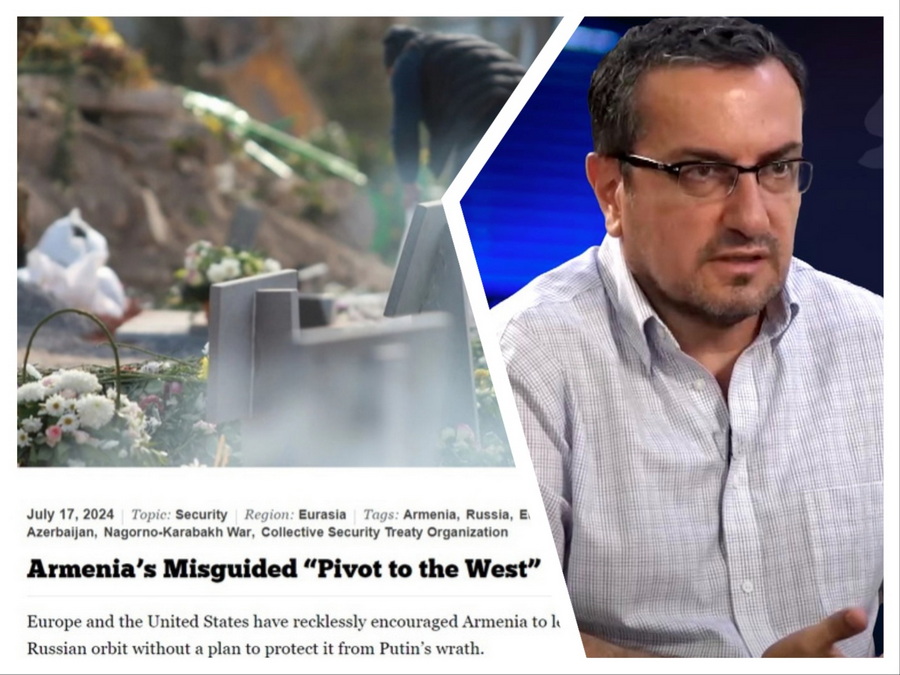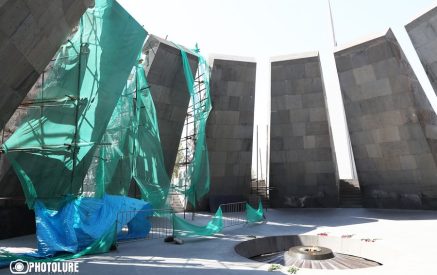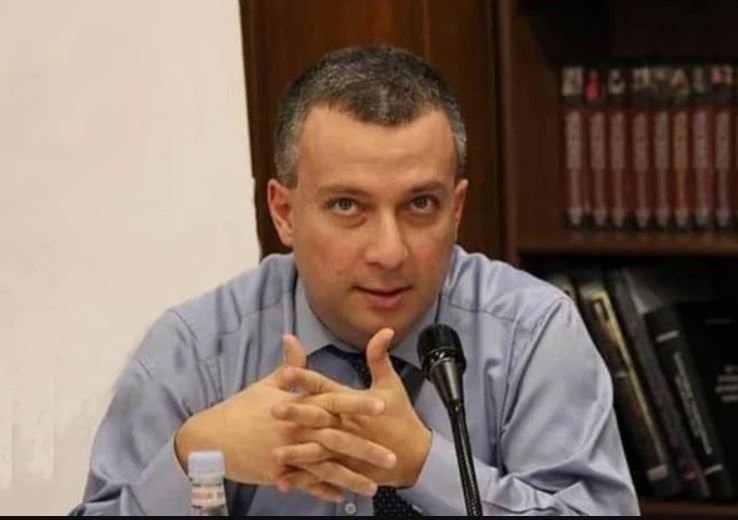Europe and the United States have recklessly encouraged Armenia to leave the Russian orbit without a plan to protect it from Putin’s wrath.
by Arman Grigoryan
Something extremely worrisome is happening in and around Armenia. The country is edging closer and closer to becoming the next theater in the destructive, dangerous, and unnecessary confrontation between the West and Russia. Armenia’s revolutionary government is “pivoting” from Russia to the West, by all appearances, walking the same path paved earlier by Georgia’s and Ukraine’s color revolutions. If the experiences of Georgia and Ukraine are any indication, Moscow is unlikely to treat this development with stoic resignation. The situation is worsened by the increasingly transparent Western encouragement of Armenia’s change of course, even though no one seriously believes that the West will be willing or able to do more for Armenia than it did for Georgia if Russia were to take off the gloves.
Read also
The Rift
Up until recently, there were few safer bets than on Armenia’s continued close alliance with Russia. Given the country’s problems with some of its neighbors, its vulnerability, and the absence of adequate alternatives, that alliance seemed to be made of steel. It started showing cracks a few years ago, however, and it is now on the verge of a breakdown. In fact, Armenian prime minister Nikol Pashinyan recently stated that Armenia intends to leave the Russian-dominated Collective Security Treaty Organization (CSTO). Even though the country’s foreign minister half-heartedly attempted to deny the existence of such intentions, talk of leaving the organization has been quite common in Armenia for some time now. Some pro-government political groups have launched a campaign demanding to hold a referendum on Armenia joining the European Union (EU), with the country’s prime minister recently expressing unqualified enthusiasm for such a path as well. Given the current state of relations between the EU and Russia, that was not just an overture toward the EU. It was a demarche against Russia.
What are the actual issues that have brought the relations between Russia and Armenia to such a low point? Armenians accuse Russia of being an unreliable ally and the CSTO of being a useless institution. They claim that Russia abandoned Armenia to the tender mercies of Azerbaijan or Turkey during the Armenian-Azerbaijani war of 2020 and that, in fact, it colluded with them. The Armenian side is aggrieved by CSTO’s refusal to intervene when Azerbaijan launched cross-border incursions into Armenia’s sovereign territory in the fall of 2022, which they consider a clear breach of treaty obligations. Armenians also accuse Russia of having failed in their peacekeeping mission, as Azerbaijan was able to impose a blockade on Karabakh in late 2022 and eventually force the entire Armenian population out of the region in September of 2023.
Russians have responded to these accusations by pointing out that Russia and CSTO had no formal obligations to intervene when war broke out in Karabakh in 2020. They further remind Armenia that Russia had proposed a—in their opinion reasonable—blueprint for a compromise settlement, commonly referred to as the “Lavrov plan,” which would have guaranteed de facto Armenian control of Karabakh in exchange for the return of some of the territories outside of Karabakh that have been under Armenian control since 1994.
Russia responded to the accusations of inaction in the fall of 2022 by arguing that the border between Armenia and Azerbaijan was not demarcated, which made the legal argument about intervention dubious. They also complain that the Armenian side refused to accept a CSTO observer mission and invited an analogous EU mission to monitor the situation on the Armenian-Azerbaijani border. Russians further accuse Armenia of failing to implement a key provision of the ceasefire agreement that ended the war of 2020, which, among other things, obligated Armenia to provide an overland link connecting mainland Azerbaijan with its exclave of Nakhijevan and which was to be monitored by Russian Federal Security Service troops.
This refusal undermined Russia’s position as the guarantor of the ceasefire and mediator in the negotiations. It also made it difficult for Russia to pressure Azerbaijan to keep the Lachin corridor, which connected Armenia to Karabakh, open while Armenia was refusing to implement the aforementioned provision. Additionally, Russians argue that after Armenia recognized Azerbaijan’s full and uncontested sovereignty over Karabakh, which they argue Armenia did without consulting with them or even notifying them, Russia could not have prevented Azerbaijan from establishing full control over Karabakh. Finally, Russians have been incensed by actions like the Armenian ratification of the Rome statute (which implied an obligation to arrest Vladimir Putin if he set foot on Armenian soil given his indictment by the International Criminal Court a few months prior), a delegation’s recent visit to Bucha, and participation in the conference on the reconstruction of Ukraine in Switzerland.
From Symptoms to Disease
It is tempting to focus on the accusations and counteraccusations listed above and try to figure out which of them are justified and who is at fault for the deterioration of relations between the two countries. That would be a fool’s errand, however, for disputes over the symptoms obscure the true nature of the disease. The current malady has three interacting pathogens—the pro-Western outlook of the Pashinyan government, the perception that Russia’s preoccupation in Ukraine has created a window of opportunity to change Armenia’s strategic orientation, and increasingly enthusiastic encouragement from the West.
Why am I calling the pro-Western outlook of Pashinyan and his team pathological? There is, of course, nothing wrong with being pro-Western per se, depending on how one defines the term. In fact, since the day it became independent, Armenia has been firmly committed to a foreign policy that is often referred to as “complementarity,” envisioning good relations with both Moscow and the West. The content of those relationships was certainly not identical. Armenia and Russia had a military alliance, which was an indispensable pillar of Armenian security since it had unresolved conflicts with some of its neighbors and since the West could not be the alternative provider of that security. Armenia, accordingly, aspired to forge and maintain relations with the West that were as close and friendly as possible without compromising on its alliance with Russia.
With minor perturbations, this status quo held until the revolution in Armenia in 2018, which brought Nikol Pashinyan and his team to power. They were not fans of “complementarity.” They were more inclined to see those relationships as incompatible and mutually exclusive, and herein lies the pathology. They came to power already with a reputation of being pro-Western and anti-Russian, having criticized the previous administration for entering the Customs Union with Russia and for having abandoned the association agreement with the EU. They made no secret of their view of Russia as an obstacle to Armenia’s democratic and economic development and a protector of the corrupt regime that the revolution had toppled.
After the revolution, an air of mutual suspicion hung over the relationship between the two countries. Russians saw the new Armenian government as yet another example of a Western-backed “color revolution” meant to infringe on Russia’s traditional sphere of influence. Pashinyan and company, in the meantime, suspected Russians of undermining them and supporting their opponents in Armenia connected to the old guard. Nevertheless, the tensions were managed for the time being as Pashinyan got the lay of the land, and Russia was willing to give him the benefit of the doubt. The revolutionary government also did not want to antagonize the Russians too much as the tensions with Azerbaijan were reaching a fever pitch.
Things took a dramatic turn after the Armenian-Azerbaijani war of 2020 and then after the escalation of the conflict in Ukraine. The Pashinyan government decided to drag its feet on the implementation of certain terms of the ceasefire agreement that Russia had mediated and guaranteed, then blamed Russia as a useless ally when Azerbaijan tried to coerce Armenia into compliance. With transparent approval from the government, several pro-government media outlets, a massive army of pundits, and several satellite political forces launched a relentless public relations (PR) campaign to propagate the myth that the war was inevitable, as it was the result of a Russian-Turkish-Azerbaijani collusion against Armenia. Even high-ranking members of the government joined the chorus.
This PR campaign served two purposes. First, it shielded Pashinyan from the responsibility for his astonishingly reckless diplomacy, which is precisely what made that war inevitable. Second, it convinced the Armenian public that Russia was an unreliable provider of security against Turkey and Azerbaijan but also their ally. This claim was designed to rebut the argument that if Armenia abandons the alliance with Russia, it will become vulnerable to Turkish and Azerbaijani coercion. If people could be convinced that Russia was already the friend of Armenia’s adversaries, then the arguments about the dangers of leaving the alliance and “pivoting to the West” would become moot. Consequently, any rapprochement with the West could only enhance Armenia’s security, whatever the limitations of Western commitments to Armenia.
The war in Ukraine provided a powerful boost to these arguments. After Russia found itself stuck in a bloody and protracted war, “pivoting to the West” started to look like an even better idea. For one thing, Russia was neck deep in trouble in Ukraine, so it was not going to go on a mat with Azerbaijan and Turkey to protect Armenia. At the same time, it was also not going to risk another crisis by going after Armenia to halt its drift.























































